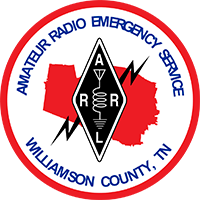|
162.400
|
162.425
|
162.450
|
162.475
|
162.500
|
162.525
|
162.550
|
Links to NOAA All-Hazards Weather Radio (NWR) frequencies, SAME codes, Public Information Statements and list of common radios:
Nashville OHX: https://www.weather.gov/ohx/weatherradio
— scroll down that page for a complete list of stations and SAME codes
Map-based NWR Transmitter Search: https://www.weather.gov/nwr/station_search
— click on the magnifying glass icon to search by address, ZIP or airport code
NWR outages map: https://www.weather.gov/nwr/outages
Public Information Statements: https://forecast.weather.gov/product_sites.php?site=NWS&product=PNS
Nationwide NOAA Weather Radio station listing: https://www.weather.gov/nwr/station_listing
NWR tramsitter locations poster (PDF): https://www.weather.gov/media/nwr/NWR_poster.pdf
General Information about NWR: https://www.weather.gov/nwr/aboutnwr
“All Hazards”: https://www.weather.gov/nwr/allhazard
Six Ways to Get the Most Out of Your NOAA All-Hazards Weather Radio:
- Make sure you have your weather radio receiver on the correct channel for your area corresponding to the correct frequency. (i.e., 162.400=channel 1, 162.425= channel 2, etc.)
- Place your weather radio near an exterior window facing the direction of the nearest weather radio transmitter.
- Pull your weather radio antenna all the way out to get the best reception. If you are close to 40 miles from the transmitter, you might have to purchase a small external antenna to ensure that your signal is strong enough to alert your radio.
- Change out your batteries at least twice a year–just like you would do with a smoke detector–to ensure your radio will work if you lose electrical power.
- Double-check that appropriate county FIPS codes have been entered correctly into your weather radio to ensure proper warnings are received. It is recommended that you program in at least a one county buffer zone especially to the west, southwest and south of your county. This could provide extra lead time if a warning is issued for an adjacent county.
- Check your weather radio receiver each Wednesday between 11 AM and 12 PM for the routine weekly test to ensure that your receiver is in good working order. (Note: In cases of inclement weather, the weekly test may be postponed to the next good weather day.)
